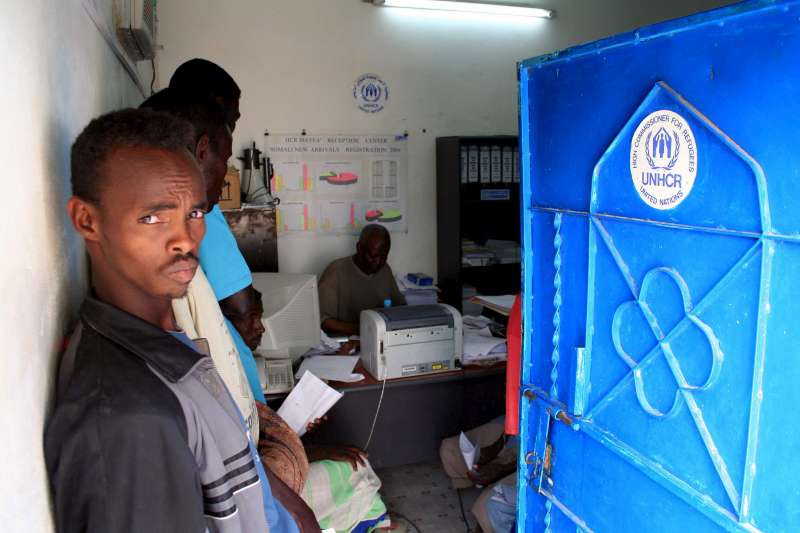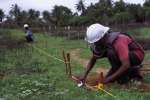Refugees continue to reach Yemen by sea despite conflict
News Stories, 27 October 2015
GENEVA, Oct 27 (UNHCR) – Almost 70,000 refugees, asylum-seekers, and migrants – primarily from Ethiopia and Somalia – have reached Yemen by sea so far this year, despite on-going conflict and a deepening humanitarian crisis there, the UN refugee agency said on Tuesday.
The strife-torn country now hosts 264,615 refugees, of whom 250,260 are Somali. More than half of the arrivals to reach Yemeni shores this year have done so since the conflict erupted in March.
UNHCR and its partners provide shelter, food and medical care in the Mayfa'a reception centre for those arriving via the Arabian Sea coast.
Reception facilities for those reaching Yemen via the Red Sea have been suspended after a fatal attack destroyed a village hosting new arrivals in Bab el Mandab.
As a result of the attack, two partner staff who were working in the transit centre were killed. One of the dead was a Yemen Red Crescent medical assistant and the other a Somali refugee working as an interpreter.
Travel to Yemen is particularly perilous. Since the beginning of the year there have been 88 recorded deaths at sea between the Horn of Africa and Yemen.
Three weeks ago a boat with migrants and refugees capsized in the Arabian Sea. Of the 68 passengers, only 33 survived. Thirty-two were rescued by a passing boat and one managed to swim to shore.
Most of the movements to Yemen have shifted to the Arabian Sea coast where people believe the situation is calmer – over 10,000 new arrivals in September, a 50 per cent increase on August, and over 10,000 so far in October.
UNHCR and its partners have been able to provide reception and medical services. While some are Somali refugees who had previously fled Yemen, the majority are Ethiopian migrants for whom Yemen is a transit stop on a journey in search of better opportunities.
Yemen itself is meanwhile seeing a continuing rise in the number of people who are displaced internally. On 15 October an IOM-UNHCR displacement-tracking mechanism published new data showing that the IDP population has reached a record-high of 2,305,048 people.
This figure is up from 545,719 individuals in mid-May. Today close to 1 out of 10 Yemenis has had to seek refuge elsewhere in the country as a result of on-going conflict or lack of basic services and a minimum of livelihood opportunities.
"Regrettably, the conflict rages in the country and the Yemeni population are bearing the brunt. UNHCR calls on all parties to the conflict to protect the lives and rights of civilians, including refugees and the internally displaced," UNHCR spokesperson Adrian Edwards told a news conference in Geneva.
"Refugees have lost their livelihoods and many are again uprooted as they move to other parts of the country," he added.
UNHCR has provided emergency relief items to 22,883 IDP families (147,386 individuals) since the end of March. Access to the affected populations, however, remains a key concern as many of those in dire need remain in areas cut-off due to conflict.
The UN refugee agency is monitoring the conditions of displaced people with specific needs such as women, children, older persons and those with medical conditions. Through regular assessments it is able to target the delivery of its protection services to those with critical needs. Community centres also provide legal and social services.
Over 121,000 people have fled Yemen to neighbouring countries since March.

















































